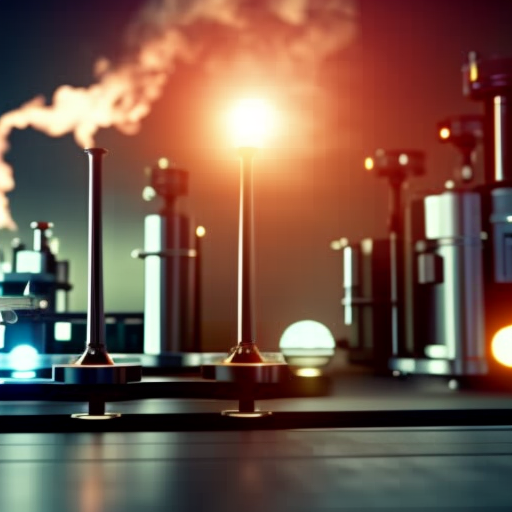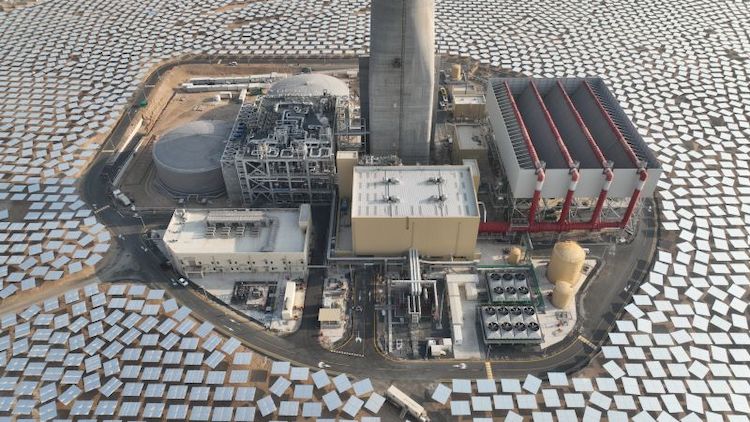
Abstract:

Abstract:
The combination of distributed energy systems (DES) and solar energy is considered a vital measure to save the usage of fossil energy. A new distributed combined cooling, heating and power (CCHP) system integrated with solar thermochemistry (STC) and energy storage (ES) units is proposed. The methane steam reforming (MSR) reaction is driven by solar energy to produce hydrogen-rich syngas, which is fed with high-efficiency solid oxide fuel cell (SOFC) – micro gas turbine (MGT) to produce electricity. The residual heat of the flue gas drives a double effect lithium bromide unit for cooling and a heat exchanger for heating, while a parabolic trough collector (PTC) is used to supplement cooling and heating supply. Under different weather conditions and user load demands, simulation analysis of the matching between system outputs and user loads is conducted, and the thermodynamic and economic performance are analyzed. The results show that through active energy storage regulation, the new system outputs can meet the hourly user loads with a matching degree of 1. The total exergy efficiencies of the system on typical summer, transition and winter days are 69.93%, 62.03%, and 52.28%, respectively, and the specific CO2 emission rates are 152.57 g/kWh, 191.75 g/kWh, and 234.16 g/kWh, respectively, indicating that the system has higher exergy efficiency and is more environmentally friendly under strong solar radiation. Economic analysis indicates that the capital investment cost is 779.34 k$, and the revenue begins in the 9-th year.
Wang, Q., Duan, L., Lu, Z., & Zheng, N. (2023). Thermodynamic and economic analysis of a multi-energy complementary distributed CCHP system coupled with solar thermochemistry and active energy storage regulation process. Energy Conversion and Management, 292, 117429. https://doi.org/10.1016/j.enconman.2023.117429
Introduction
The combination of distributed energy systems (DES) and solar energy is considered a vital measure to save the usage of fossil energy. In this report, a new distributed combined cooling, heating and power (CCHP) system integrated with solar thermochemistry (STC) and energy storage (ES) units will be discussed. The system aims to address the need for sustainable energy solutions while reducing reliance on fossil fuels.
Main Body
System Description
The proposed system utilizes the methane steam reforming (MSR) reaction driven by solar energy to produce hydrogen-rich syngas. This syngas is then fed into a high-efficiency solid oxide fuel cell (SOFC) – micro gas turbine (MGT) system to generate electricity. The residual heat from the flue gas is utilized for cooling through a double effect lithium bromide unit and for heating through a heat exchanger. Additionally, a parabolic trough collector (PTC) is employed to supplement the cooling and heating supply.
Simulation Analysis
Simulation analysis was conducted to evaluate the matching between the system outputs and user loads under different weather conditions and user load demands. The results showed that through active energy storage regulation, the new system outputs were able to meet the hourly user loads with a matching degree of 1. This demonstrates the system’s capability to provide reliable and consistent energy supply.
Thermodynamic and Economic Performance
The thermodynamic and economic performance of the system was analyzed. The total exergy efficiencies of the system on typical summer, transition, and winter days were found to be 69.93%, 62.03%, and 52.28%, respectively. Furthermore, the specific CO2 emission rates were measured at 152.57 g/kWh, 191.75 g/kWh, and 234.16 g/kWh for the respective seasons. These results indicate that the system exhibits higher exergy efficiency and is more environmentally friendly, particularly under strong solar radiation.
Sustainable Development Goals (SDGs)
- SDG 7: Affordable and Clean Energy – The proposed system contributes to the goal of ensuring access to affordable, reliable, sustainable, and modern energy for all.
- SDG 9: Industry, Innovation, and Infrastructure – The integration of solar thermochemistry and energy storage units in the system promotes technological innovation and the development of sustainable infrastructure.
- SDG 13: Climate Action – The system’s high exergy efficiency and reduced CO2 emissions align with efforts to combat climate change and its impacts.
Economic Analysis
An economic analysis was conducted to assess the financial viability of the system. The capital investment cost was estimated to be 779.34 k$, and the revenue generation is projected to begin in the 9th year
SDGs, Targets, and Indicators
-
SDG 7: Affordable and Clean Energy
- Target 7.1: By 2030, ensure universal access to affordable, reliable, and modern energy services
- Indicator 7.1.1: Proportion of the population with access to electricity
- Indicator 7.1.2: Proportion of the population with primary reliance on clean fuels and technology
-
SDG 9: Industry, Innovation, and Infrastructure
- Target 9.4: By 2030, upgrade infrastructure and retrofit industries to make them sustainable, with increased resource-use efficiency and greater adoption of clean and environmentally sound technologies and industrial processes
- Indicator 9.4.1: CO2 emission per unit of value added
-
SDG 13: Climate Action
- Target 13.2: Integrate climate change measures into national policies, strategies, and planning
- Indicator 13.2.1: Number of countries that have integrated mitigation, adaptation, impact reduction, and early warning into primary, secondary, and tertiary curricula
Table: SDGs, Targets, and Indicators
| SDGs | Targets | Indicators |
|---|---|---|
| SDG 7: Affordable and Clean Energy | Target 7.1: By 2030, ensure universal access to affordable, reliable, and modern energy services | Indicator 7.1.1: Proportion of the population with access to electricity Indicator 7.1.2: Proportion of the population with primary reliance on clean fuels and technology |
| SDG 9: Industry, Innovation, and Infrastructure | Target 9.4: By 2030, upgrade infrastructure and retrofit industries to make them sustainable, with increased resource-use efficiency and greater adoption of clean and environmentally sound technologies and industrial processes | Indicator 9.4.1: CO2 emission per unit of value added |
| SDG 13: Climate Action | Target 13.2: Integrate climate change measures into national policies, strategies, and planning | Indicator 13.2.1: Number of countries that have integrated mitigation, adaptation, impact reduction, and early warning into primary, secondary, and tertiary curricula |
The article addresses or connects to the following SDGs:
- SDG 7: Affordable and Clean Energy – The article discusses the combination of distributed energy systems (DES) and solar energy as a measure to save the usage of fossil energy. This aligns with the goal of ensuring universal access to affordable, reliable, and modern energy services.
- SDG 9: Industry, Innovation, and Infrastructure – The article proposes a new distributed combined cooling, heating, and power (CCHP) system integrated with solar thermochemistry and energy storage units. This aligns with the goal of upgrading infrastructure and retrofitting industries to make them sustainable.
- SDG 13: Climate Action – The article mentions that the proposed system has higher exergy efficiency and is more environmentally friendly under strong solar radiation. This aligns with the goal of integrating climate change measures into national policies and strategies.
Based on the article’s content, the specific targets that can be identified are:
- Target 7.1: By 2030, ensure universal access to affordable, reliable, and modern energy services.
- Target 9.4: By 2030, upgrade infrastructure and retrofit industries to make them sustainable, with increased resource-use efficiency and greater adoption of clean and environmentally sound technologies and industrial processes.
- Target 13.2: Integrate climate change measures into national policies, strategies, and planning.
The article mentions or implies the following indicators that can be used to measure progress towards the identified targets:
- Indicator 7.1.1: Proportion of the population with access to electricity – The article discusses the production of electricity through the combined cooling, heating, and power system, indicating progress towards ensuring universal access to electricity.
- Indicator 7.1.2: Proportion of the population with primary reliance on clean fuels and technology – The article highlights the use of solar energy and methane steam reforming to produce clean syngas, indicating progress towards increasing reliance on clean fuels and technology.
- Indicator 9.4.1: CO2 emission per unit of value added – The article mentions the specific CO2 emission rates of the system, indicating progress towards reducing CO2 emissions per unit of value added.
- Indicator 13.2.1: Number of countries that have integrated mitigation, adaptation, impact reduction, and early warning into primary, secondary, and tertiary curricula – Although not explicitly mentioned in the article, the integration of climate change measures into the proposed system aligns with the indicator’s objective.
Behold! This splendid article springs forth from the wellspring of knowledge, shaped by a wondrous proprietary AI technology that delved into a vast ocean of data, illuminating the path towards the Sustainable Development Goals. Remember that all rights are reserved by SDG Investors LLC, empowering us to champion progress together.
Source: solarpaces.org

Join us, as fellow seekers of change, on a transformative journey at https://sdgtalks.ai/welcome, where you can become a member and actively contribute to shaping a brighter future.






